Log in or create new account to save this product to your wishlist.
Lawn scarification, all you need to know | With clear step-by-step plan
In this article, we’re going to explore everything you need to know about scarifying. We’ll explain how the process works, why you should scarify regularly, with lots of additional tips so that you can achieve a green and healthy lawn your neighbours will envy.
Latest articles
7 MIN 22 Jul How to keep your lawn in shape this summer 9 MIN 15 Jul Watering Your Garden: 10 Top Tips! 11 MIN 15 Jul Is Your Grass Type Right for your Garden? 11 MIN 10 Sep Create Your Low-Maintenance Garden – Tips and Ideas 11 MIN 08 Sep The Ultimate Guide to Choosing the Perfect Hedges for Your Garden 12 MIN 30 Aug The Top 20 Evergreen Climbers to Transform Your GardenWhat is scarifying?
Scarification sounds like something you might expect at Hallowe’en. But it’s nothing to do with scary monsters and Trick or Treating. Scarifying your lawn is a task that lots of people worry about because it stresses the lawn. But done the right way, this process will completely restore and renovate your dying grass.
- What is scarifying?
- Why do I need to scarify my lawn?
- When should I scarify my lawn?
- At what time of day should I scarify my lawn?
- How often should I scarify my lawn?
- Should I use a scarifier or a rake when I want to scarify my lawn?
- How do I scarify my lawn?
Scarifying is a vital maintenance technique that removes moss or dead organic material from around your grass plants (also known as the thatch layer). This organic matter suffocates the roots of your lawn, inhibiting grass growth while encouraging more weeds and moss.
Scarifying is a process that breaks the soil surface and is usually done manually with a rake or a scarifying machine. Verticutting is another scarifying method that doesn’t break the topsoil and gives the grass more room to develop.
Why do I need to scarify my lawn?
Grass plants need space to develop and thrive into a beautiful green lawn. The grass plant’s main growth takes place at the base (also called “the crown”), which sits at the soil line. The grass blades sprout from the crown – and the space between these crowns dictates the growth of a healthy lawn.
However, if the soil surface becomes overpopulated, the grass plants suffer. Moss is the particular culprit here – growing between the grass crowns and, ultimately, preventing oxygen and nutrients from reaching the soil.
Scarifying restores the space between the grass crowns.
In addition to moss, lawns develop a thatch layer of dead organic matter (such as autumn leaves) which suffocate the lawn, preventing the absorption of water, light, oxygen, and nutrients
This is all terrible news for your lawn. But fear not: scarification is the solution and should be performed annually.
It’s quite a tough job (and you will think that you’ve wrecked the lawn initially), but your lawn will visibly improve if you do it right.
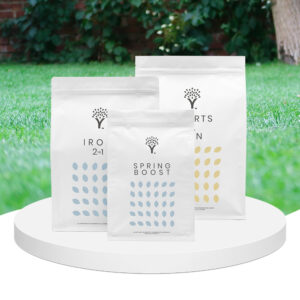
- Controls weed growth
- Restores your grass quickly after scarifying
- Contains everything you need to make your scarifying project a success
When should I scarify my lawn?
Scarifying stresses your lawn, which is why it’s best only to scarify while your grass is growing well. The best times to scarify your lawn are from March to May, and in the autumn from the end of August to October.
Grass doesn’t grow when the soil temperature is below 10ºC. Be careful not to use the outside temperature as a yardstick – air temperature is NOT the same as soil temperature.
Soil warms up much more slowly than the air, but it maintains heat for much longer.
Give your soil time to reach the right temperature. In most cases, this will be at the beginning of March, but the best way to tell is to use a soil thermometer. Sink the thermometer 3cm into the surface of the soil for the most accurate reading.
The weather on the day of scarifying your lawn shouldn’t be too warm or sunny. A cloudy day is best, and a drop or two of rain won’t hurt during the process.
Scarifying your lawn also puts a strain on the lawn, so it is best to scarify at a time when the grass is growing well.
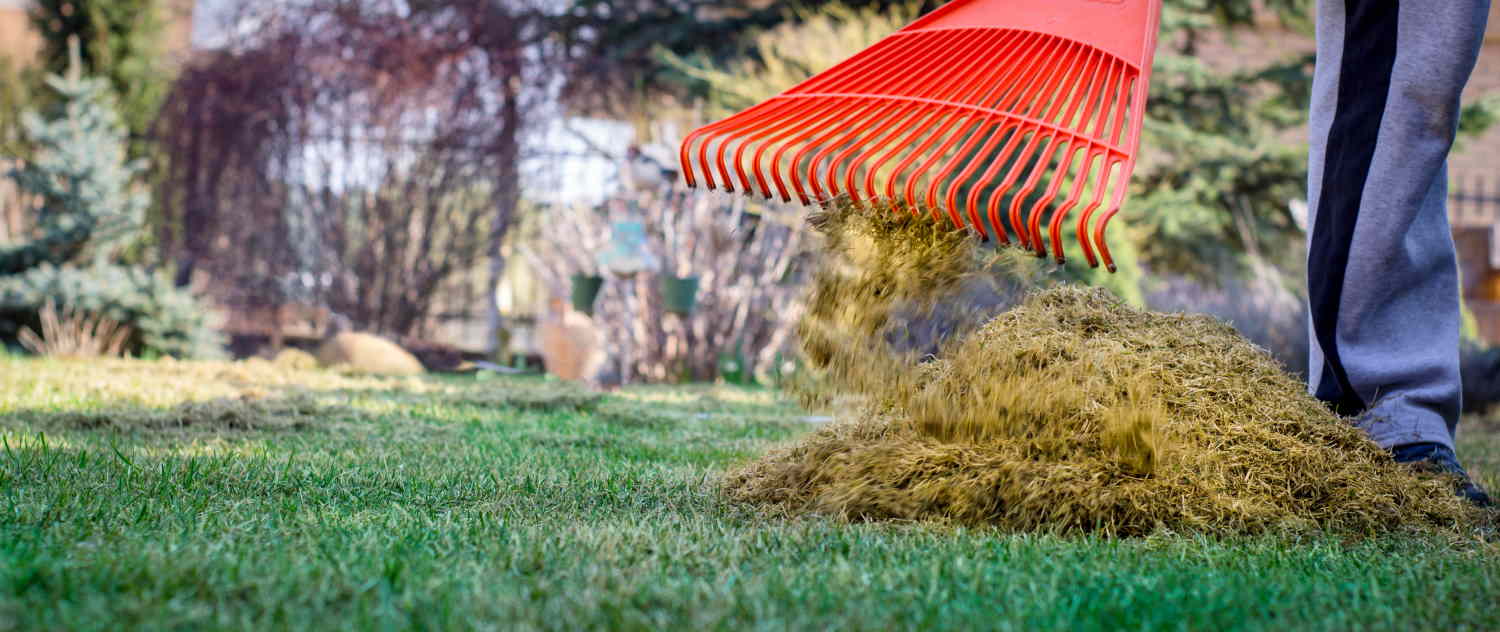
At what time of day should I scarify my lawn?
It’s not so important to choose a specific time of day during the spring or autumn – it’s inadvisable to scarify your lawn at all in the winter when the soil is cold and hard.
The rule of thumb is to avoid scarifying during the hottest part of the day when the temperature is over 20ºC. Scarifying your lawn tears the grass, which causes it to dry out more quickly – so avoid scarifying in full sun. Remember the adage – “mad dogs and the Englishmen go out in the midday sun”? Them’s the rules: avoid scarifying when the sun is at its most powerful.
In any case, make sure that you water the grass well after scarifying; another reason to leave it until the afternoon/early evening, as wet leaves can scorch until harsh sun).
How often should I scarify my lawn?
It depends on how much thatch or moss your particular lawn produces. Shady lawns are more prone to moss, for example – so they need more regular scarifying. Most lawns benefit from annual scarifying. A lawn that hasn’t been scarified for a long time is likely to need some intensive work, so making scarification part of your annual routine means that the job is easier each time.
If the thatch layer reaches 2cm deep (or more), you should scarify annually. If it’s under 1cm in depth, you can scarify every other year.
TOP TIP: grass cuttings left on the lawn after mowing mulch down into thatch much more quickly, making more regular scarification necessary. Avoid extra work by clear cuttings after mowing.
Should I use a scarifier or a rake when I want to scarify my lawn?
A scarification machine (or a verticutter) minimises the effort required for scarification. However, many people prefer to do it by hand, using a rake.
If your lawn is larger than 150sq-m, we think rake scarification is probably going to be a little back-breaking.
When scarifying your lawn mechanically, you can choose between an electrically-driven or a petrol scarifier. We recommend a petrol-driven scarifier for larger lawns (unless you have lots of extension power cables!). Petrol-driven machines are often more powerful – if you have lots of moss to remove, petrol is a good choice.
A scarifier is expensive to buy, especially if you need it just once a year, so we recommend hiring one. Get in touch with your local garden centre or DIY store – they may have machines to hire. Alternatively, Google “scarifying machines to hire near me” for your nearest garden machine specialist.
You can hire a scarifier for around £40 a day. However, the job is unlikely to take all day, so find out if your neighbour wants to use it as well and split the cost!
Scarifying your lawn by hand is the most labour-intensive option, but – for smaller gardens – it’s quite a satisfying garden task.
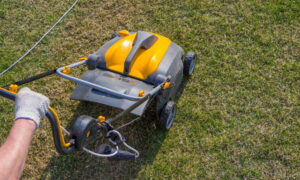
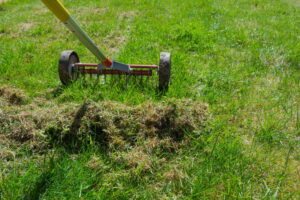
How do I scarify my lawn?
Use our step-by-step guide to find out the correct technique, or watch the video below (or subscribe to the MOOWY YouTube channel for regular tips and tricks for beautiful lawns).
STEP 1 | Mowing the lawn briefly
Scarifying long grass is much more difficult, so be sure to mow beforehand. Cut your grass between 3- and 5cm in length for best results.
STEP 2 | Scarifying
A common mistake is that people plough too deeply into the soil, making the job much harder than it needs to be. Dig a maximum of 5mm into the topsoil for optimal moss removal – this is enough to cut through the grass plants’ top roots, causing the plant to release a growth hormone that activates the healing process.
If in doubt, start with a less conspicuous part of your lawn to get an idea of the pressure you need to apply if you’re scarifying by hand.
STEP 3 | Scarify 2nd time for optimal result
For best results, it’s a good idea to scarify at least twice (three times is even better). This makes sure that any areas you’ve missed get exposed.
You’ll be shifting lots of organic material from the lawn each time – make sure you remove it from the lawn (and add it to the compost heap).
Start lengthwise for the first scarification, and then at a 45-degree angle – this way, you’re sure to cover the entire lawn.
This lengthwise and diagonal approach makes the job of scarification:
- Lighter work for you if working by hand
- Softer impact on your scarifying machine
- Much less intensive and stressful for your lawn
And your lawn recovers more quickly!
If your lawn is in a particularly poor condition, scarify it a third time.
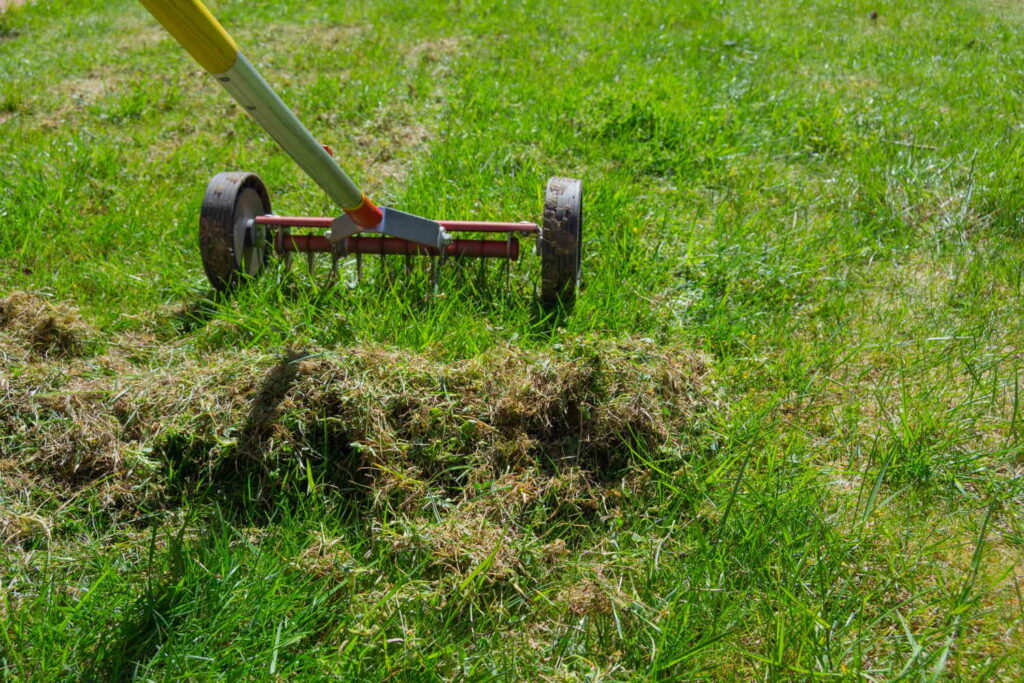
STEP 4 | Aftercare, what do you do after scarifying?
Scarifying is stressful for your lawn, and it’s going to look like you’ve driven a bulldozer through your lawn. It’s like a slasher movie for your grass.
But:
The process of scarification forces the lawn into repair mode, and the plant releases growth hormone straight away. This is the perfect time to fertilise and water the lawn, and – for best results – it’s a great opportunity to overseed. But fertilise first.
Fertilise with a high-nitrogen fertiliser such as Spring Boost or All-round Vital Plus fertiliser. Nitrogen stimulates leaf development, and this improves and shortens recovery.
Overseeding the lawn at this stage stops weeds growing in the fresh gaps and encourages lush, full grass coverage once the lawn has recovered. We recommend MOOWY’s Quick Repair grass seed for the quickest and most effective outcome. Read all about the benefits of overseeding here.
TOP TIP: don’t let the lawn dry out after scarifying – your grass needs water to bounce back. Water thoroughly after fertilising and overseeding, then water again once or twice a day for the next two weeks (unless there’s plenty of rain).
I’m ready. When and how do I start scarifying my lawn?
Make sure you have the right gear to get started. If you’re working by hand, you’ll need a high-quality scarifying rake, and you’ll need fertiliser and lawn seed. Luckily, MOOWY has put together a range of scarifying kits – for perfect scarification every time.
If you have any questions, we’re here to help! Get in touch, and we’ll be pleased to help you.
Leave a comment
Your answer will be displayed on the site and the interested party will be notified by email.
Leave a comment
Have a question or want to share your experience? Leave us a comment.
Read more
The best tips and tricks for a lush green lawn
 Scarifying Kit
All products after scarifying | Quickly restores the lawn after scarifying | Outsmart weeds quickly with the use of this kit
From: € 39.99
Scarifying Kit
All products after scarifying | Quickly restores the lawn after scarifying | Outsmart weeds quickly with the use of this kit
From: € 39.99
 Spring Lawn Care Kit
MOOWY’s choice for the spring | Quick recovery of your lawn after winter | A strong lawn prevents weeds
From: € 25.99
Spring Lawn Care Kit
MOOWY’s choice for the spring | Quick recovery of your lawn after winter | A strong lawn prevents weeds
From: € 25.99
 Long Lasting Lawn Fertiliser
Effective for 90 days | See results in 14 days! | Suitable for all types of grass and soil
From: € 13.99
Long Lasting Lawn Fertiliser
Effective for 90 days | See results in 14 days! | Suitable for all types of grass and soil
From: € 13.99
Do you want a lawn calendar?
🌱 All important maintenance moments for your lawn during the year. Leave your email and we will send you the lawn calendar for free.
Enter your email
Receive the lawn calendar in the mail
Enjoy a green lawn all year round!



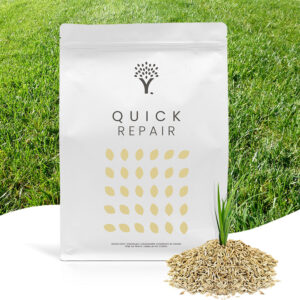
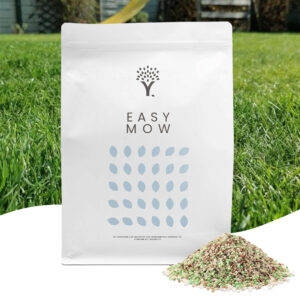
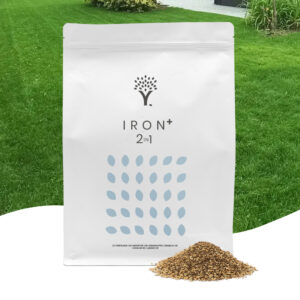

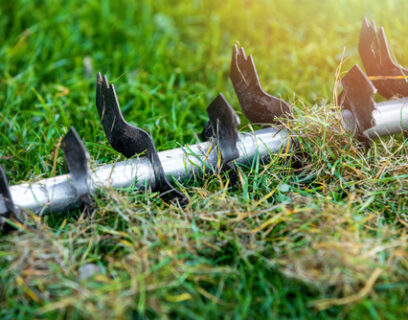






Comments (0)
There are no comments yet. Well then, what are you waiting for to
Be the first to write your comment!inaugurate this pretty page?
Do you have some comments?